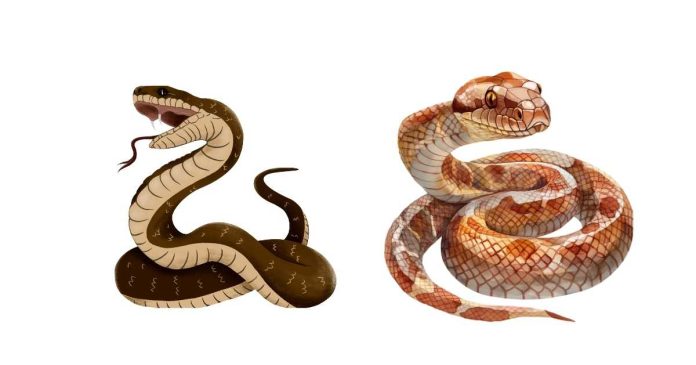Desert snakes, like many species of snakes, have various natural predators depending on their size, species, and the specific desert environment they inhabit. In general, animals that prey on desert snakes include a wide variety of carnivores, omnivores, and some birds of prey.
Here is a detailed breakdown of the types of animals that typically hunt desert snakes:
1. Birds of Prey
- Hawks: Several species of hawks, such as the red-tailed hawk and Cooper’s hawk, are skilled hunters and prey on snakes. These birds have keen eyesight that allows them to spot snakes from high in the air. They swoop down to capture their prey and use their sharp talons to immobilize it.
- Eagles: Larger birds of prey like golden eagles are also capable of taking down larger snakes. These powerful birds have strong talons and beaks designed for catching and killing prey, including snakes.
- Owls: Some owl species, including the great horned owl, are nocturnal predators that hunt at night and are known to eat snakes. Their silent flight and strong talons make them efficient hunters of snakes, particularly smaller species.
- Vultures: While vultures typically scavenge, they may also prey on young or weakened snakes in the desert environment.
2. Mammals
- Foxes: Desert foxes, such as the fennec fox, are opportunistic omnivores that may hunt small snakes or scavenge snake carcasses. Their keen sense of smell and agility help them capture smaller snakes.
- Coyotes: Coyotes are highly adaptable carnivores that will eat a wide range of animals, including desert snakes. They may hunt snakes directly or scavenge them from other predators.
- Bobcats: Bobcats are skilled hunters known to prey on various animals, including snakes. They have the agility and stealth to stalk and capture snakes, especially in desert regions where they are common.
- Raccoons: Although raccoons are omnivores, they will sometimes eat snakes, particularly smaller or juvenile ones. Their dexterous front paws allow them to manipulate and handle snakes.
3. Reptiles
- Larger Snakes: Some larger species of snakes, such as the kingsnake, are known to prey on other snakes, including venomous species like rattlesnakes. Kingsnakes are immune to the venom of certain snakes and are able to overpower and consume them.
- Monitor Lizards: Some monitor lizard species, such as the desert-dwelling rock monitor or sand monitor, are opportunistic hunters that may target smaller snakes as part of their diet.
- Gila Monsters: While Gila monsters primarily feed on smaller animals like insects and rodents, they may occasionally eat snake eggs or very small snakes, though this is less common.
4. Other Desert-Dwelling Predators
- Kangaroo Rats: While not typical predators of snakes, these rodents may occasionally prey on smaller, defenseless snake hatchlings, or act as an easy meal for predators that feed on snakes.
- Wildcats: Some wildcats in the desert, including species like the African wildcat and serval, may occasionally target snakes as part of their diet. These animals are opportunistic hunters and may eat smaller snakes or young ones.
5. Humans
- Although not a natural predator in the strictest sense, humans may sometimes kill or hunt desert snakes, either for protection (from venomous species like rattlesnakes) or for commercial purposes (e.g., snake skins or as trophies). In some cultures, snakes may also be hunted for food or traditional medicine.
6. Amphibians
- Although amphibians are not typical snake predators, certain larger amphibians in desert environments, such as bullfrogs, may prey on small snakes or snake eggs if the opportunity arises.
Factors Influencing Snake Predation:
- Size and Venom: Larger, venomous snakes like rattlesnakes may have fewer natural predators due to their dangerous venom, but they are still at risk from large birds of prey or other large carnivores. In contrast, smaller non-venomous snakes are more vulnerable to a wider range of predators.
- Snake Behavior: Some desert snakes, like the sidewinder rattlesnake or horned viper, rely on camouflage and stealth to avoid detection, reducing their risk of being preyed upon.
- Young vs. Adult Snakes: Snake eggs and young snakes are particularly vulnerable to predation, as they lack the defensive mechanisms of adult snakes.
Conclusion:
Desert snakes face predation from a diverse array of animals, with birds of prey, certain mammals, and even other reptiles being some of their primary natural predators. The exact predators depend on the snake species, size, and whether the snake is an adult or juvenile. Predation pressure varies across desert ecosystems, but the animals mentioned above represent a wide range of those that will feed on desert snakes when the opportunity arises.


